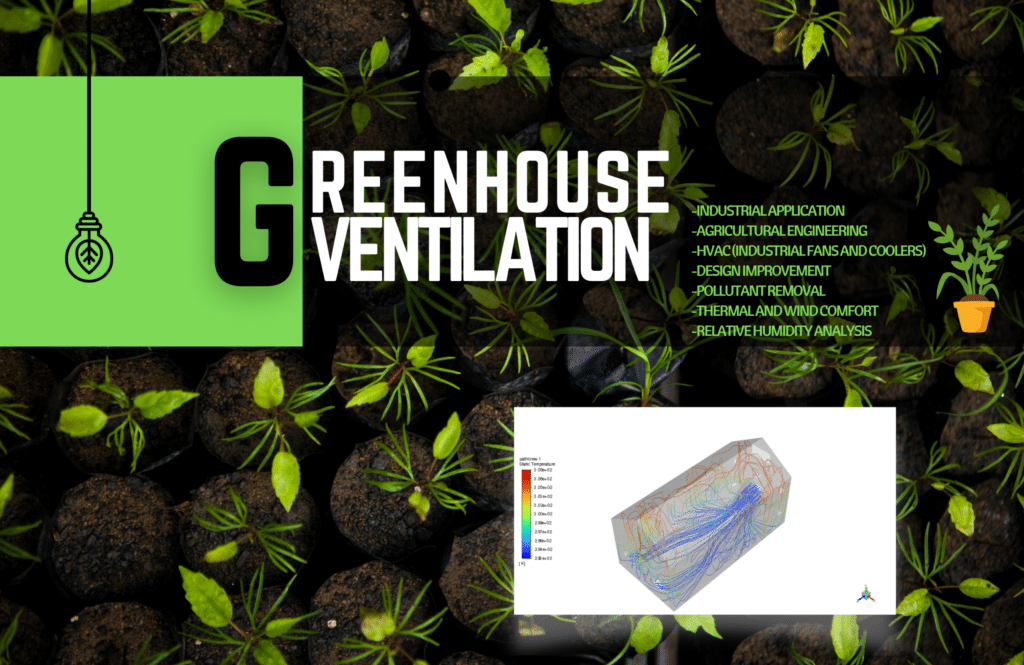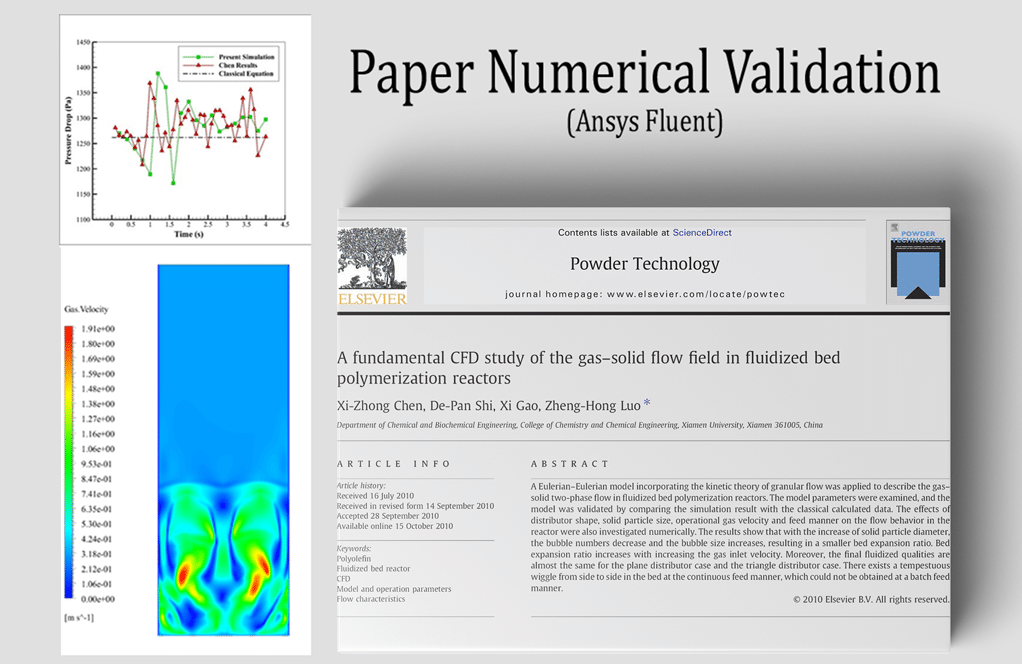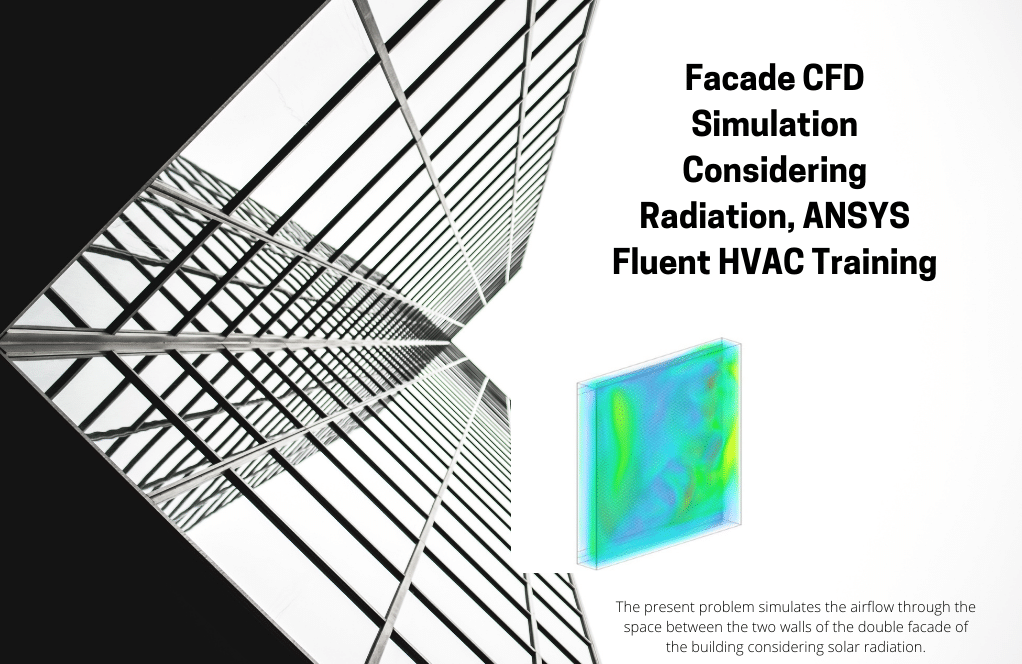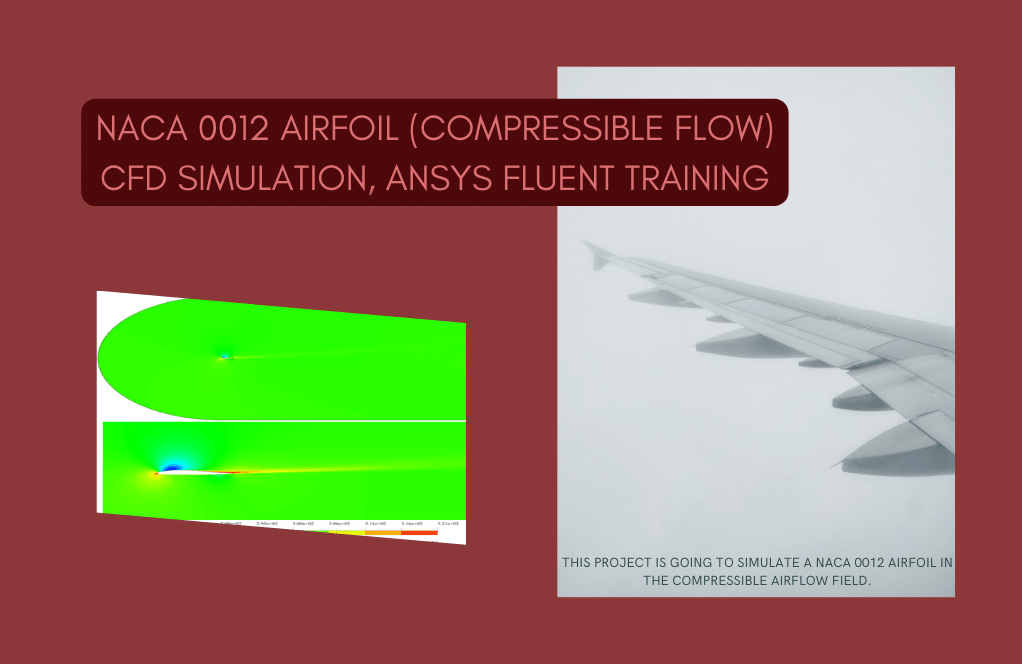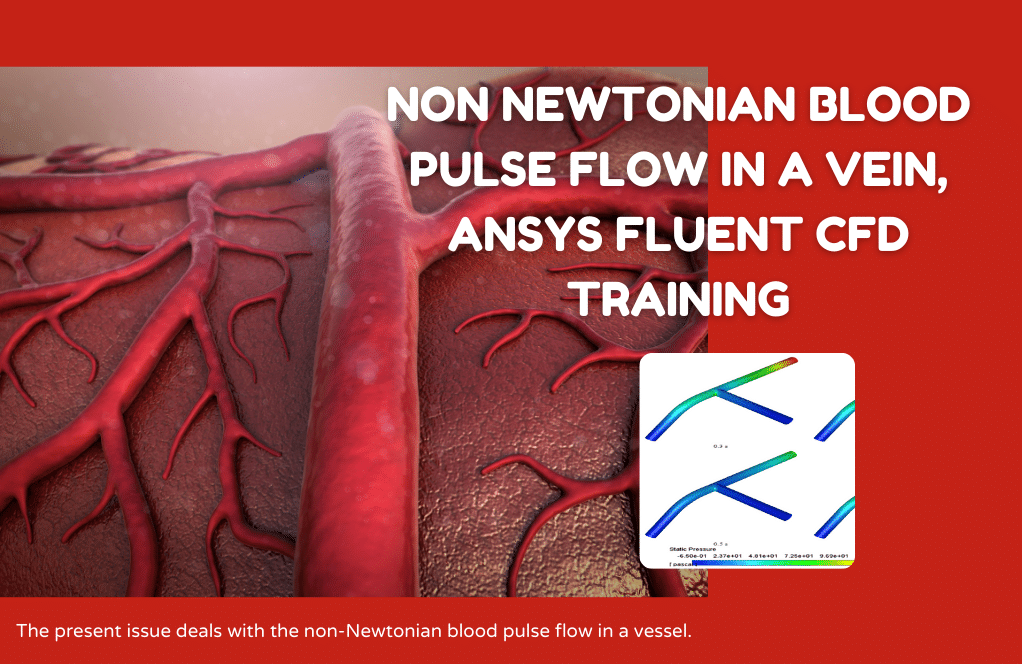Project Outsourcing
Outsource your project to the MR CFD simulation engineering team. Our experts are ready to carry out every CFD project in all related engineering fields. Our services include industrial and academic purposes, considering the ANSYS Fluent software's wide range of CFD simulations. By outsourcing your project, you can benefit from MR CFD's primary services, including Consultation, Training, and CFD Simulation. The project freelancing procedure is as follows:
An official contract will be set based on your project description and details.
As we start your project, you will have access to our Portal to track its progress.
You will receive the project's resource files after you confirm the final report.
Finally, you will receive a comprehensive training video and technical support.
What is Mechanical Engineering?
Mechanical engineering is the mother of all engineering disciplines, yet it is also the most diverse and flexible. It includes crucial aeronautical, electrical, civil, chemical, material science, bio-engineering, physics, and mathematics components. Mechanical engineering touches virtually every aspect of modern life, from mobile phones and biomedical devices to aircraft and power plants.
Engineers in this field work in sales, engineering management, and corporate management, among other fields, in a world where continual economic, political, industrial, and social change, versatility is another distinct advantage. Mechanical engineers have been trained and are in a position to define and direct adaptation. Mechanical engineering covers a wide range of topics, including:
- Acoustic
- Aerospace
- Automation
- Automotive
- Autonomous Systems
- Biotechnology
- Composites
- Computer-Aided Design (CAD)
- Control Systems
- Cyber Security
- Design
- Energy
- Ergonomics
- Human Health
- Manufacturing and Additive Manufacturing
- Mechanics
- Nanotechnology
- Production Planning
- Robotics
- Structural Analysis
Mechanical engineering is a type of engineering that deals with designing, analyzing, making, and taking care of mechanical systems. Physics, math, and materials science are used to create and build tools, structures, and systems in this engineering area. Mechanical engineers work on various projects, such as creating and making engines, power plants, robots, machines, and industrial processes. They also work on designing and making heating, ventilation, and air conditioning (HVAC) systems, transportation systems, and medical devices. Mechanical engineering is a broad field with many job options.
Mechanical engineering is the discipline of engineering concerned with the creation, study, production, and upkeep of mechanical systems. Mechanical engineers create anything from tiny individual components and gadgets to massive systems and machines using the concepts of physics, mathematics, and materials science. They fix anything from automobiles to nuclear power reactors to surgical robots. Opportunities for creativity and problem-solving abound in the broad realm of mechanical engineering.
How can CFD simulation be applied in Mechanical Engineering Industries?
Technology has recently transformed mechanical engineers’ operations, and their tools have grown highly significant. CAE is an umbrella word that covers everything from traditional CAD (Computer-Aided Design) techniques to computer-aided manufacturing to computer-aided engineering, including finite element analysis (FEA) and computational fluid dynamics (CFD).
These and other tools have broadened mechanical engineering’s scope. As we all know, fluid mechanics is the central subfield of mechanical engineering. Computational fluid dynamics is the most used approach for forecasting fluid mechanic behavior. CFD is a technology that can produce an accurate result early in the design process, allowing the designer to experiment with numerous possibilities without incurring high financial or time costs. We use the word “could” since this isn’t always true. A CFD simulation is not simple and necessitates using pricey commercial software.
A mechanical engineer may model any phenomenon seen naturally or artificially using the CFD approach. Most aspects of the Mechanical industry rely on fluid dynamics. Although physical prototypes are required for later phases of development, CFD studies may significantly speed up Design and optimization in the early stages.
The field of mechanical engineering benefits considerably from using Computational Fluid Dynamics (CFD) simulation. Some examples are as follows:

– Automotive Industry: Engine cooling systems, exhaust systems, and vehicle aerodynamics are examples of how CFD simulation is employed in the automobile sector.
– HVAC Industry: The heating, ventilation, and air conditioning (HVAC) sector uses computational fluid dynamics (CFD) modeling to improve the Design of HVAC systems for buildings.
– Power Generation Industry: When designing and optimizing gas turbines, steam turbines, and other parts of power plants, CFD modeling is employed extensively.
– Medical Industry: Ventilators, blood pumps, and artificial hearts are just some medical equipment that benefits from computational fluid dynamics (CFD) modeling in the design and optimization process.
In conclusion, CFD simulation is a powerful tool that can enhance the development, functionality, and efficiency of products and systems across various mechanical engineering sectors.
MR CFD services in the Mechanical Engineering Industries
MR CFD conducted numerous outsourced simulation projects for industrial and researched Mechanical Engineering applications. With several years of experience simulating various problems in various CFD fields using ANSYS Fluent software, MR CFD is ready to offer extensive services of simulation configurations.
Mechanical engineers frequently use computational fluid dynamics (CFD) simulation services when developing new products or improving existing ones. CFD simulation services include the following examples:
– Aerodynamic Analysis: Products like airplanes, vehicles, and wind turbines may all benefit from CFD simulation’s ability to examine their aerodynamics. Lift, drag, and other aerodynamic forces may be predicted, and the Design can be optimized accordingly.
Aerial Engine CFD Simulation Training Package
The ten ANSYS Fluent CFD simulation projects covered in this course cover various aircraft propulsion systems. MR-CFD suggests using this training package in CFD analysis of engines—aerodynamic Engineering. You’ll learn how to describe and create projects, as well as how to simulate them using a variety of numerical approaches.
Having a variety of aircraft engines at our disposal allows us to accomplish various jobs for various missions and weather situations. Air engines have come a long way from their early days as simple piston or propeller engines to today’s advanced and complex scramjets, turbojets, etc. 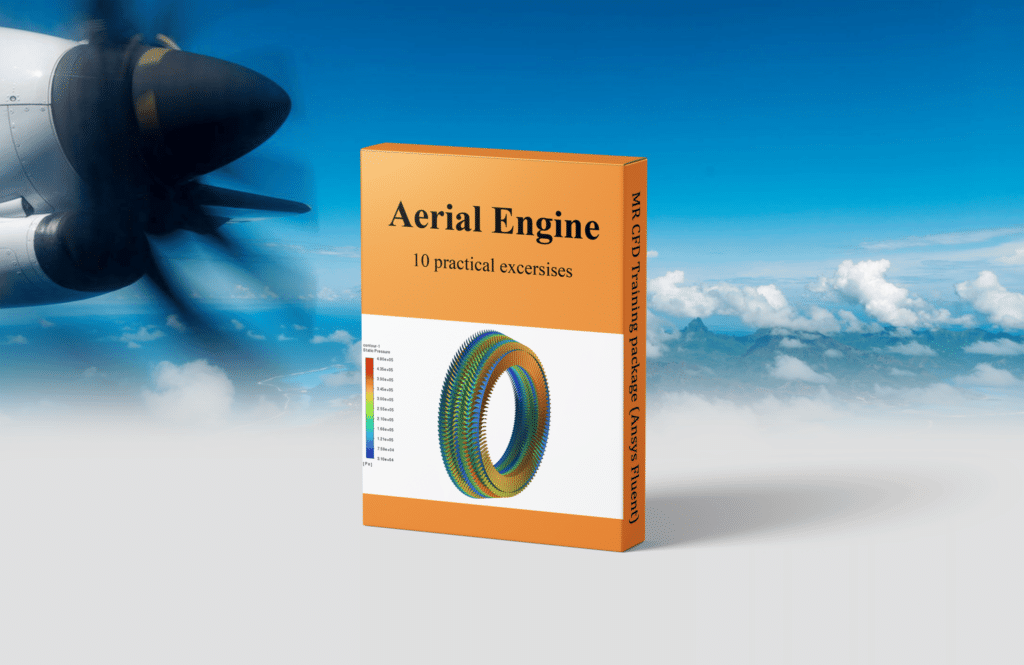
After studying this tremendous and practical training package, you can confidently model and analyze every CFD simulation related to aerial engines and their applications. Prepare yourself for a career as a CFD engineer in the relevant fields.
- Supersonic Jet Ramped Intake Simulation
- High-Bypass Turbofan Engine
- Turboprop Engine Propeller CFD Simulation
- Ramjet Engine, Design, and Combustion Optimization
- Hypersonic Combustion in Scramjet with Viscous Heating
- Combustion Chamber
- Rocket Engine Nozzle
- Helicopter CFD Simulation by Transient Solver
- Multi-Stage Axial Gas Compressor CFD Simulation
- Multi-Stage Axial Gas Turbine CFD Simulation
– Thermal Analysis: The thermal behavior of items like engines, heat exchangers, and electronics may be analyzed by CFD simulation. It may improve the Design for maximum efficiency and performance by predicting temperature distributions, heat transfer rates, and other thermal factors.
Heat Transfer CFD Simulation Training Package
This training package for the computational fluid dynamics (CFD) program Ansys Fluent has been designed for experienced heat transfer professionals. You will be taught and trained thoroughly on how to mimic complex tasks. The acquired expertise will equip you to select the best modeling strategies and techniques for CFD simulations and application development.
This bundle equips you with the knowledge and skills to run complex heat transfer simulations in Ansys Fluent, a program used in computational fluid dynamics (CFD). Professional training videos and detailed explanations of CFD ideas, covering every angle of running CFD simulations in Ansys Fluent from start to finish.
– The Acquired Results
– Learn how to use Ansys Fluent for complex CFD heat transport tasks.
– Be familiar with the best Fluent SETUP models for various situations.
– Learn to get all the information you need
– Learn to interpret CFD results
In this offering, we’ll show you the ropes of using Ansys Fluent to calculate numerical heat transfer. The work steps of a CFD simulation will be familiar to you based on your experience with CFD applications.
A Heat Transfer CFD Simulation Training Package aims to arm engineers with the know-how to run CFD simulations for real-world heat transfer problems.
Access to specialized CFD software and instruction on simulation projects tailored to heat transfer applications are other possible components of the training package. The course is intended to give engineers the background they need to do CFD simulations for heat transfer applications, which improve the efficiency and effectiveness of equipment used in manufacturing.
Heat Exchanger CFD Simulation Training Package
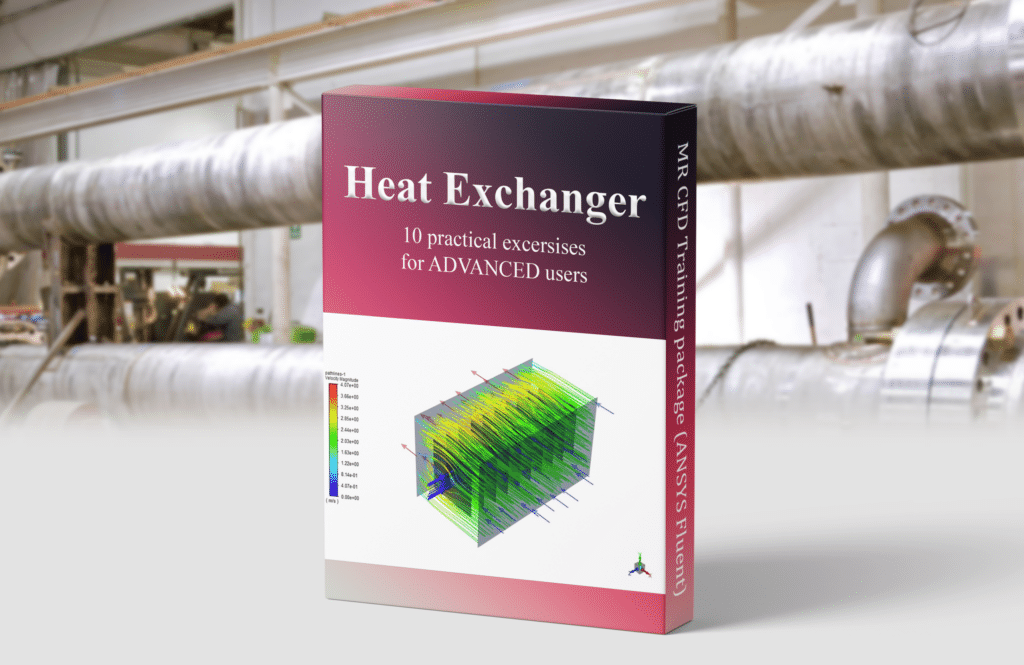
In addition to guidance from seasoned teachers, the training package might include access to CFD software and simulation projects geared at heat exchangers. The course is intended to teach engineers the fundamentals of computational fluid dynamics (CFD) simulations for heat exchangers, which can improve the efficiency and effectiveness of heat exchangers in a wide range of settings, including heating, ventilation, and air conditioning (HVAC), power generation, and chemical processing.
- Shell and Tube Heat Exchanger
- Triplex Tube Heat Exchanger
- Finned Tube Heat Exchanger
- Double Pipe Heat Exchanger
- Porous Heat Exchanger
- Solar Heat Exchanger
- Plate Heat Exchanger
– HVAC Analysis: Air and fluid movement in a building’s heating, ventilation, and air conditioning (HVAC) system may be analyzed via computational fluid dynamics (CFD) modeling. Optimizing the Design for maximum comfort and efficiency may be done through its usage to anticipate temperature and humidity distributions, air flow rates, and other characteristics.
– Combustion Analysis: CFD simulation may be used to study combustion in internal combustion engines and power plants. It may be utilized for performance and environmental effect optimization and for predicting combustion efficiency, emissions, and other factors.
Combustion Training Course by ANSYS Fluent
This course will teach you all you need to know to properly configure the species transport model to model the combustion process in any domain. How to simulate the formation of NOx, SO2, and soot in Fluent is detailed, as are the various techniques and simulation models that can be used, such as Finite rate (No TCI), Eddy dissipation, and Eddy dissipation/Finite rate turbulence-chemistry interactions. You’ll start by getting an overview of each model, then go on to learn advanced techniques for running reliable combustion simulations. The Combustion Training Course includes:
- Introduction to combustion and an overview of available CFD simulation techniques and models in ANSYS Fluent.
- Non-premixed combustion modeling using the Eddy Dissipation
- Premixed combustion modeling using the Eddy Dissipation
- Pollution formation
- Premixed combustion modeling using the Finite rate/No TCI
- Non-premixed combustion with separate inlet boundaries for fuel and air by assuming Chemical Equilibrium among chemical reactants and products
- Non-premixed combustion inside a combustion chamber with separate inlet boundaries for fuel and air by assuming a steady diffusion flamelet.
- Partially-premixed combustion
- Partial differential function (PDF) transport model combustion
Combustion CFD Simulation Training Package
Our Combustion CFD Training Package is made for users of various skill levels. Our training package has something to offer everyone, from those just getting started with CFD simulations to seasoned pros wishing to hone their craft. Every Combustion CFD Simulation Training Package includes ten practical exercises. All three levels (Beginner, Intermediate, and Advanced) are included in this bundle. An outline of each class is as follows:
 Beginner Training Package
Beginner Training Package
Combustion CFD simulations using ANSYS Fluent are the focus of the Introductory course. This course will teach you:
- Pollutant prediction in the combustion chamber
- Vortex flame combustion chamber
- Gas turbine combustion chamber
- Vortex combustion chamber
- Non-premixed combustion
- Flare system
You will finish this course with a firm grasp of the fundamentals of combustion CFD simulations and the ability to run basic simulations independently.
Intermediate Training Package
If you’ve already taken the Beginner course, this one will take your knowledge to the next level by teaching you advanced strategies for simulating combustion. This course will teach you:
- Hypersonic combustion in scramjet with viscous heating
- Premixed combustion in the porous zone
- Radiation in the combustion chamber
- DPM spray in a combustion chamber
- Combustion inside a boiler
- Bluff-body mild burner
- Limekiln combustion
- Combusting particles
- Biomass combustion
- Industrial furnace
Your knowledge of combustion CFD simulations and ability to run more complex simulations independently will improve by the course’s end.
Advanced Training Package
This course will teach you how to use ANSYS Fluent to run complex combustion simulations. This course will teach you:
- Circulating Fluidized Bed (CFB) gasifier
- Non-adiabatic, chemical equilibrium
- Ramjet design and optimization
- Fire and smoke in the building
- Partially premixed combustion
- Design Of Experiment (DOE)
- Composition PDF transport
- EHD effect on combustion
- Wet combustion by DPM
- Two-stream combustion
- Car explosion
By the end of the course, you will be able to tackle the most challenging combustion CFD models independently. Take the first step toward becoming an engine simulation expert with ANSYS Fluent by enrolling in our Combustion CFD Training Package today.
– Fluid-Structure Interaction Analysis: Pumps, valves, and turbines are just a few examples of goods that might benefit from a CFD simulation analysis of the fluid-structure interaction. Stresses, deformations, and other structural factors may be predicted, and the Design can be optimized for more excellent durability and performance.
MR CFD is ready to offer extensive modeling, meshing, and simulation services. Our essential CFD services for Mechanical engineering simulations are categorized as follows:
- Aerodynamic CFD simulation of cars, planes, etc.
- CFD Simulation of engines and spinning and transitional systems
- CFD Simulation of cooling systems, including air conditioners and refrigerator
- Analysis of noise reduction and silencers on airfoils, cars, drones, etc.
- CFD Simulation of mechanical devices such as pumps, compressors, fans, turbines, fans, diffusers, ejectors, dryers, mixers, separators, condensers, refrigerators, evaporators, reactors, injectors, solar stills, nozzles, solar chimneys, cyclones, erosion, jets, etc.
- Acoustic Analysis
- CFD Simulation of shell and tube, plate, double pipe, dry cooling towers, wet cooling towers, heat exchangers, radiators, heaters, splits
- 2-stroke and 4-stroke engine, store separation, etc. analysis
- CFD simulation of injection devices such as injectors, sprays, dust dispersion, …
- Solidification and melting
- CFD Simulation of heating systems (water heaters, central heating, the heat transfer from the floor, …)
- CFD Simulation of ventilation, air conditioning, etc.
- CFD Simulation of orifice and fluid measurements
- CFD Simulation of open channel flow (boats, ships, and submarines)
- Chemical reactions such as combustion chamber, NOx removal, etc. CFD simulation
- Heat transfer CFD simulation, electronic cooling, thermal management, etc.
- Analysis of Multiphase flows (spillway, sedimentation, …)
Mechanical Engineering MR CFD Projects
There are several MR CFD simulation projects in Mechanical engineering. Following are some examples of CFD simulation projects:
Discrete Phase Model (DPM) Training Course
Do you want to know more about particle-laden flow simulation using the discrete phase model (DPM)? Our DPM Training Course is the place to be if you want to learn how to use this powerful CFD modeling technique.
The DPM is a theory for simulating the motion of discrete particles in a fluid flow, and that theory will be covered in this course. Also covered is using the popular CFD simulation software ANSYS Fluent to build up and execute DPM simulations.
The DPM technique is taught through video lectures, practical exercises, and quizzes. You’ll get instructions on the following:
– Define particle properties, such as size, density, and velocity.
– Set up the DPM model in ANSYS Fluent and define the particle injection conditions.
– Simulate the motion of particles in a fluid flow and analyze the results.
– Optimize the DPM simulation settings for different applications.
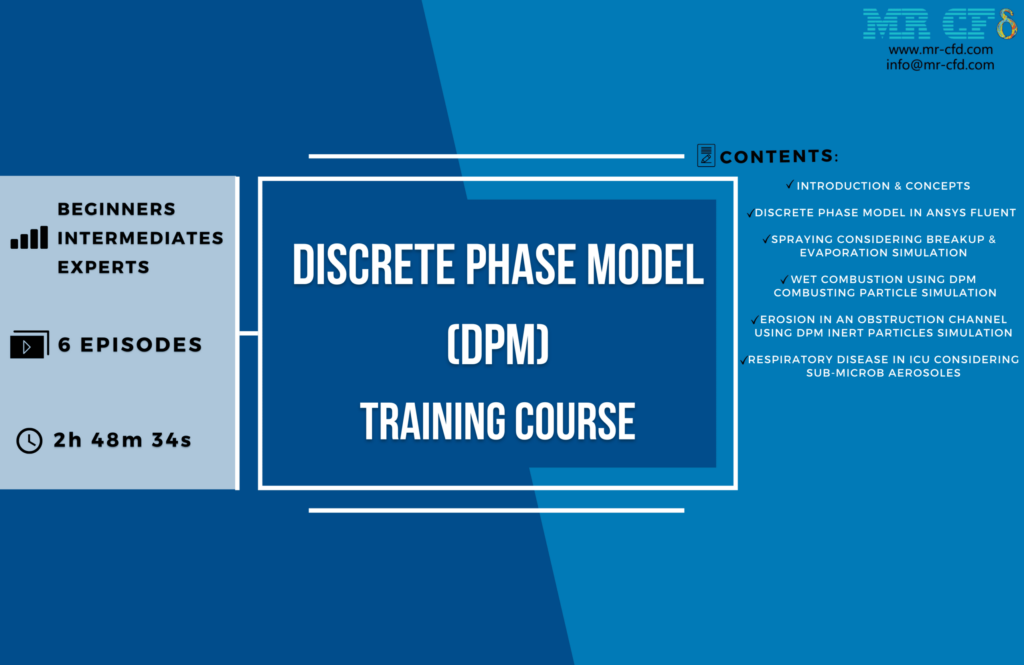
Chapter 1: (DPM Concepts): An Overview of Discrete Phase Model Fundamentals
Chapter 2: Discrete Phase Model module in ANSYS Fluent software and investigate sub-models
Chapter 3: (Training Example 1): Spraying Considering Breakup & Evaporation
Chapter 4: (Training Example 2): Wet Combustion using DPM combusting particles
Chapter 5: (Training Example 3): Erosion in an obstruction channel
Chapter 6: (Training Example 4): ICU Ventilation Design Improvement
DPM CFD Simulation Training Package
CFD simulations for particle-laden flows using the Discrete Phase Model are often taught in courses and supplementary materials known as a DPM (Discrete Phase Modeling) CFD Simulation Training Package. In addition to guidance from seasoned educators, the training package might also involve using CFD software and simulation projects tailored to flows with suspended particles. The course aims to teach engineers the skills they’ll need to run CFD simulations for particle-laden flows, which can improve the efficiency and effectiveness of various manufacturing procedures.
Turbomachinery CFD Simulation Training Package
Engineers and scientists interested in analyzing and optimizing turbomachinery systems, including pumps, compressors, and turbines, might benefit from our Turbomachinery CFD Simulation Training Package. All three levels (Beginner, Intermediate, and Advanced) are included in this bundle.
Water Turbine CFD Simulation Training Package
The ten ANSYS Fluent CFD simulation tasks covered in this course cover horizontal and vertical water turbines. For people thinking about getting into Renewable Energy Engineering, this package is recommended by MR-CFD. Considering a wide range of related numerical studies, this program introduces you to several types of water turbines and how to model them.
- paper validation
- Tidal Turbine
- Helical, Darrieus, Kaplan, Francis
- Pelton Wheel, Water Wheel, Screw Turbine (AST)
Mechanical Engineering – ANSYS Fluent CFD Simulation Training Package
The goal of the courses and materials included in a standard CFD simulation training package for mechanical engineers is to equip them with the expertise to run CFD simulations for ten different use cases. Some of the components of the training program are as follows:
– Introduction to CFD: Course that introduces students to the governing equations, numerical methods, and turbulence modeling used in computational fluid dynamics (CFD).
– Meshing Techniques: A class called “Meshing Techniques” teaches students how to generate meshes for computational fluid dynamics (CFD) simulations using organized and unstructured methods.
– Boundary Conditions and Solver Settings: Inlet and outlet conditions, turbulence models, and convergence criteria are only some topics covered in a course on boundary conditions and solver settings for computational fluid dynamics (CFD) simulations.
– Heat Transfer Simulations: A study using computational fluid dynamics (CFD) to simulate heat transfer processes like conduction, convection, and radiation.
– Fluid Flow Simulations: Included in this course is practical instruction in simulating flow through pipes, valves, and other components using computational fluid dynamics (CFD), with a focus on laminar and turbulent flow.
– Multiphase Flow Simulations: Two-phase flow, free-surface flow, and cavitation are only some topics covered in a course on multiphase flow simulations using computational fluid dynamics (CFD).
– Combustion Simulations: An introduction to computational fluid dynamics (CFD) for simulating combustion, covering combustion chemistry, flame propagation, and emissions.
– Post-processing and Visualization: An introductory course covering contour plots, vector plots, and animation in the context of computational fluid dynamics (CFD) simulations.
Access to CFD software and simulation projects, as well as guidance from knowledgeable instructors, maybe a part of the training package. The course is intended to teach mechanical engineers the fundamentals of computational fluid dynamics (CFD) and how to use them in various contexts, including HVAC design, turbine design, and automobile design.
Mass Transfer CFD Simulation Training Package
What Is Mass Transfer? Courses and resources designed to teach engineers how to use ANSYS Fluent for CFD simulations of mass transfer processes are included in a standard ANSYS Fluent CFD Simulation Training Package. In addition to guidance from seasoned teachers, the training package may involve using ANSYS Fluent software and mass transfer process-oriented simulation tasks. This training package will teach engineers how to run computational fluid dynamics (CFD) simulations of these processes to improve the Design and performance of chemical reactors, distillation columns, and other mass transfer devices.
Compressible Flow CFD Simulation Training Package
Training packages typically include courses and supporting materials to provide engineers with the expertise necessary for CFD simulations of compressible flow processes. Some of the components of the training program are as follows:
– Introduction to CFD: Course that introduces students to the governing equations, numerical methods, and turbulence modeling used in computational fluid dynamics (CFD).
– Meshing Techniques: Training in producing meshes for computational fluid dynamics (CFD) simulations, including structured and unstructured meshing.
– Boundary Conditions and Solver Settings: Inlet and outlet conditions, turbulence models, and convergence criteria are only some topics covered in a course on boundary conditions and solver settings for computational fluid dynamics (CFD) simulations.
– Compressible Flow Simulations: One such course is “Compressible Flow Simulations,” which employs computational fluid dynamics (CFD) to model compressible flows such as shock waves, expansion waves, and boundary layer interactions.
– Aerodynamics Simulations: Aerodynamics Simulations is a CFD-based course that teaches students how to simulate airflow over airfoils and wings and calculate lift and drag.
– Post-processing and Visualization: An introductory course covering contour plots, vector plots, animation, and other post-processing and visualization approaches for CFD simulations.
In addition to guidance from seasoned instructors, the training package may feature access to CFD software and simulation projects tailored to compressible flow processes. To improve the Design and performance of aerospace vehicles, gas turbines, and other high-speed flow systems, this training package will teach engineers how to use computational fluid dynamics (CFD) simulations for compressible flow processes.
Dynamic Mesh ANSYS Fluent CFD Simulation Training Package
Dynamic Mesh ANSYS Fluent Training Package features ten hands-on CFD Simulation activities designed for BEGINNER, INTERMEDIATE, and ADVANCED software users curious about the Dynamic Mesh module. You’ll get a thorough education in the art of project simulation. The acquired expertise will equip you to select the best modeling strategies and techniques for CFD simulations and application development.
A Dynamic Mesh The courses and resources that make up an ANSYS Fluent CFD Simulation Training Package are designed to teach engineers how to run CFD simulations with a dynamic mesh in ANSYS Fluent. In addition to knowledgeable teachers and access to the ANSYS Fluent software, the training package may also contain simulation projects tailored to dynamic mesh applications.
Mechanical Industrial Companies
Companies in the mechanical industrial sector are those that focus on the development, production, and distribution of mechanical parts and systems for use in various industrial contexts. These businesses often offer a wide range of products and services to their consumers, and they are active in the industrial, engineering, and building sectors. The following are some examples of mechanical industrial firms:
General Electric (GE): Aircraft engines, power generation equipment, and medical imaging technology are just a few of the many goods and services produced by General Electric (GE), a multinational business.
Siemens: Siemens is an international technology firm that specializes in electrification, automation, and digitalization across a variety of industries, such as manufacturing and healthcare.
Caterpillar: Diesel and natural gas engines, industrial gas turbines, diesel-electric locomotives, and other construction and mining equipment are just some of the products that Caterpillar produces.
ABB: Robotics, electricity, large electrical machinery, and automation are the main areas of expertise at ABB, a global conglomerate founded in Switzerland.
Emerson Electric Co.: Emerson Electric Co. is a worldwide technology firm that serves a wide variety of businesses with products like automation systems, control valves, and generators.
Schneider Electric: Schneider Electric is an international conglomerate that specializes in electrical distribution, automation, and building management systems for the commercial, industrial, and residential sectors.
Mitsubishi Heavy Industries: Power systems, industrial gear, and even aircraft equipment are just some of the many things that Mitsubishi Heavy Industries produces.
Many industrial processes rely on the products and services provided by these and similar enterprises. They are essential to the success of the industrial sector.
MR CFD Industrial Experience in the Mechanical Field
Following are some examples of Mechanical industrial projects recently simulated and analyzed by MR CFD in cooperation with related companies.
SR-71 Blackbird Ramjet Engine, Design, and Combustion Optimization
The ramjet engine is a type of air-breathing jet engine used for high-velocity, high-altitude flight. The engine generates thrust by compressing air drawn in through the intake and burning fuel. The ramjet is unique among jet engines because it uses the aircraft’s forward momentum alone to compress the incoming air, rather than a turbine or compressor.
The geometry of the inlet, the combustion chamber, and the nozzle are all essential parts of a ramjet engine’s Design that affect its performance. High-altitude, high-velocity flight is possible because of the SR-71 Blackbird’s engine, designed specifically for that purpose. A variable-shaped inlet regulated airflow and the combustion chamber was optimized for high temperatures.
Combustion in a ramjet engine can be improved by paying attention to details like fuel injection, mixing, and ignition. The SR-71 Blackbird’s engine’s fuel injection system sprayed fuel into the combustion chamber, which mixed with the incoming air and ignited by a spark plug. Every step of the combustion process was monitored and adjusted for optimal fuel economy and thrust.
The ramjet engine is widely employed in the aerospace sector for purposes such as fast airplanes and missiles. Computational fluid dynamics (CFD) simulations are commonly used to model the flow of air and fuel through the engine and enhance its performance, despite the complexity of ramjet engine design and optimization.
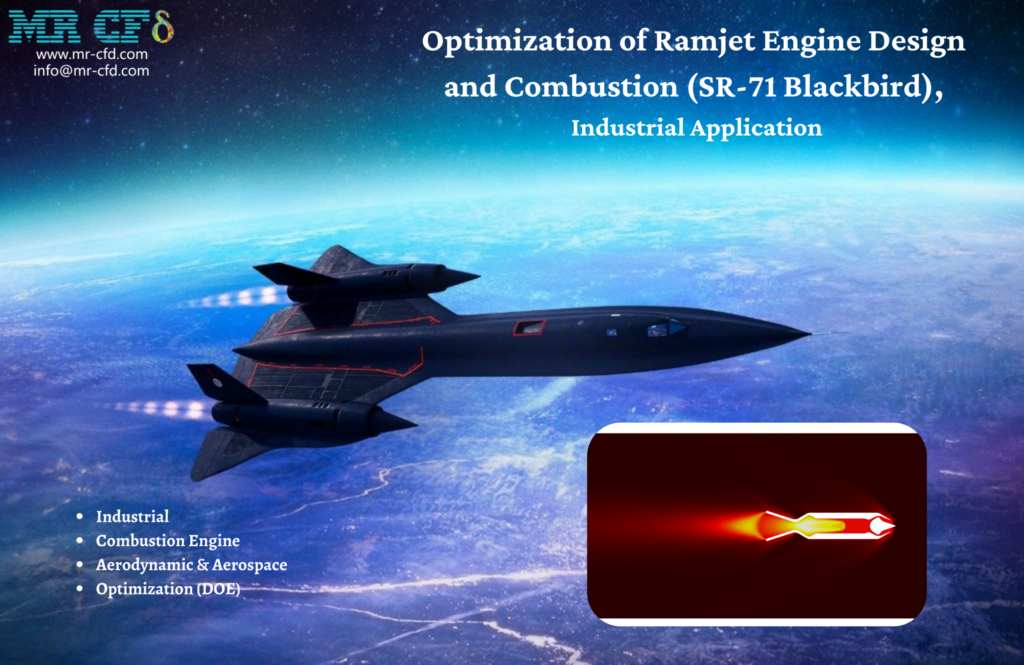
- This work uses the ANSYS Fluent software to perform numerical simulations of a commercial Ramjet Engine.
- Analysis of heat transfer, combustion, pressure, density (in the context of compressible flow), and the Mach number.
- The project’s goal is to improve the Thrust value’s potential.
- Upgrade to the Ramjet Plane Design.
- We have utilized DOE in RSM analysis.
ICU Ventilation Design Improvement
A better intensive care unit (ICU) ventilation design is essential to protect patients and medical staff. Industrial applications like hospitals and medical institutions might benefit from using CFD models to fine-tune ventilation systems. Ventilation systems can be modeled and analyzed for air and pollutant flow using ANSYS Fluent, a robust CFD simulation software. If you want to introduce this subject on your website, you could start with this:
Do you want to upgrade the ICU’s or hospital’s ventilation system? Using CFD simulations to improve ventilation system design is vital to our Intensive Care Unit (ICU) Ventilation Design Improvement course.
In this course, you will learn how to simulate and analyze air and pollutant flow in ventilation systems using ANSYS Fluent. You’ll get instructions on the following:
– Set up the geometry and boundary conditions for a ventilation system in ANSYS Fluent.
– Define the flow and thermal properties of air and contaminants in the system.
– Simulate the flow of air and contaminants in the ventilation system and analyze the results.
– Optimize the ventilation system design to improve air quality and reduce the spread of airborne contaminants.
The project aims to equip you with the knowledge and skills to perform computational fluid dynamics (CFD) simulations to improve ventilation systems in commercial buildings. As a result, you may help guarantee the health and safety of patients and healthcare staff by identifying potential design enhancements that can improve air quality and prevent the spread of airborne contaminants.
Take the first step toward better ventilation design in your medical facility by enrolling in our Intensive Care Unit Ventilation Design Improvement course today.
- ANSYS Meshing is used for the meshing once the geometry has been developed in Design Modeler.
• One of the patients has a lung condition. We want to stop it from spreading as much as possible.
• Aerosols can be modeled using the one-way discrete phase model (DPM).
• We also want this project to have sufficient thermal comfort, which PPD and PMV regulate.
Greenhouse Ventilation and Design Improvement
You need better ventilation if you want healthy plants and a productive greenhouse. Industrial applications like greenhouses can use CFD simulations to fine-tune their ventilation systems. Ventilation systems can be modeled and analyzed for air and pollutant flow using ANSYS Fluent, a robust CFD simulation software. If you want to introduce this subject on your website, you could start with this:
Do you want to revamp the greenhouse’s ventilation system? In our Greenhouse Ventilation and Design Improvement course, you may learn the skills you need to optimize ventilation systems using CFD simulations.
In this project, you will learn how to simulate and analyze air and pollutant flow in greenhouse ventilation systems using ANSYS Fluent. You’ll get instructions on the following:
– Set up the geometry and boundary conditions for a greenhouse ventilation system in ANSYS Fluent.
– Define the flow and thermal properties of air and contaminants in the system.
– Simulate the flow of air and contaminants in the ventilation system and analyze the results.
– Optimize the ventilation system design to improve air quality and reduce the spread of airborne contaminants.
The project aims to equip you with the knowledge and skills to perform computational fluid dynamics (CFD) simulations to improve ventilation systems in commercial buildings like greenhouses. You’ll know how to spot potential design changes that boost air quality and lessen the spread of airborne contaminants, which is essential for maximizing plant development and yield.
Order Greenhouse Ventilation and Design Improvement course today to enhance your greenhouse’s ventilation system.
– In this project, ANSYS Fluent has been used to simulate an industrial greenhouse
– Checking the temperature, air velocity, and relative humidity
– Getting rid of ammonia, a harmful contaminant
– Refinements to the greenhouse structure
– An investigation of the HVAC system
Pelton Wheel Turbine
The Pelton Wheel Turbine is a common type of hydraulic turbine. A CFD simulation-based numerical analysis is warranted to understand better the Pelton Wheel Turbine’s performance and how to improve its Design for commercial use. Pelton Wheel Turbine Computational Fluid Dynamics (CFD) simulations typically include the following steps:
– Geometry and Meshing: The turbine’s geometry is modeled in a CAD program before being loaded into a CFD program for analysis via meshing. Suitable meshing techniques, such as structured or unstructured meshing, are used to the geometry to generate the mesh.
– Boundary Conditions: The simulation’s boundary conditions, such as intake and outlet conditions, wheel rotation speed, and boundary conditions for the turbine blades, are defined.
– Fluid Properties: The working fluid’s density, viscosity, and specific heat are described together with other fluid parameters.
– Simulation Setup: The turbulence model, time step, and convergence criteria used in the simulation are all specified.
– Simulation Run: Performance parameters, such as power output, efficiency, and pressure distribution, are examined after the simulation is run using the stated setup.
– Post-processing: Visualization tools are used to understand the flow patterns better and pinpoint design flaws uncovered by the simulation.
Pelton Wheel Turbines are useful in industrial settings and can be improved through computational fluid dynamics (CFD) simulations. The simulation findings can be used to adjust the turbine’s blade size and form to increase efficiency and decrease costs, for instance. CFD models are a valuable tool for enhancing the Design of a Pelton Wheel Turbine for use in industrial settings and better comprehending the turbine’s performance.
Generator Room Ventilation
Ventilation of the generator room is essential in manufacturing and other commercial settings where generators generate electricity. The generator will run more efficiently and stay calm if its housed space has adequate ventilation. Studying the ventilation of generator rooms and optimizing the ventilation system design for industrial applications can be done using computational fluid dynamics (CFD) simulation.
The ventilation system design for industrial applications can be optimized using CFD models of generator room ventilation. The simulation findings can be utilized to optimize the ventilation ducts’ placement and size, increase airflow distribution efficiency, and decrease system costs, among other things. In conclusion, CFD models of generator room ventilation are a potent tool for gaining insight into the ventilation system’s performance and perfecting its Design for industrial uses.
The HVAC (heating, ventilation, and air conditioning) system of a generator room is modeled in this project using Ansys Fluent. After running the simulations, it becomes clear that the room temperature with 32 generators is relatively high because the room is initially simulated without a fan. The temperature is significantly lowered by deploying 32 fans with 11,000 CFM. However, 32 fans totaling 36,500 CFM have been added to increase ventilation and temperature and to achieve the requisite thermal comfort between generator rows.
Furnace, Industrial Application
In this project, we used ANSYS Fluent to simulate an industrial furnace and analyze the resulting simulation data. We use computational fluid dynamics (CFD) to undertake this investigation. In this project, an industrial furnace was numerically simulated using the Ansys Fluent software. Methane fuel is burned in the virtual furnace to heat the Methane in the pipes, allowing the Methane to be transported more swiftly and with less effort.
The results show that the methane pipe system’s temperature rises from the outlet’s entrance. Combustion occurs after fuel is introduced to the furnace, where it is combined with air. The furnace’s base features six burners. In the radiant area of the furnace, the flame strikes the pipes, heating the liquid inside, which is Methane. Burnt gases from the combustion process escape through the chimney. The present work’s geometry was designed in SolidWorks (for the pipe drawings) and Design Modeler (for the rest of it), and both share the exact dimensions as the model in the attached catalog.
In the oil, gas, and petrochemical industries, furnaces generate heat at over 400 degrees Celsius. Heating the oil in a furnace can reduce viscosity, making transporting the heavy mineral flood oil easier. This endeavor aims to raise the temperature of Methane.
Here, industrial Furnaces were simulated numerically using ANSYS Fluent. Methane fuel is burned in the virtual furnace to heat the Methane in the pipes, allowing the Methane to be transported more swiftly and with less effort. The results show that the methane pipe system’s temperature rises from the outlet’s entrance.
– Specifically, ANSYS Fluent is used to perform a numerical simulation of a Furnace.
– The Design Modeler program was used to create the 3D model.
– We use the ANSYS Meshing software to create a mesh with 7800000 elements.
– We employ the Species Transport model to characterize the combustion interaction between Methane and air.
Venturi Scrubber, Industrial Application
Cement kilns, chemical and pharmaceutical companies, industrial boilers, gold factories, metallurgical plants, and incinerators are just a few places where scrubbers are used. Therefore, a sample scrubber’s simulation parameters are sought after in this study. This configuration allows for the simulation of scrubbers of varying sizes and sorts.
An industrial Venturi scrubber was simulated using ANSYS Fluent software. Scrubbers with a venturi design may remove impurities in the gas phase as small as 0.1 microns. The gadget contains a large volume of water, which increases the amount of water exposed to dirt and debris.
This results in the scrubber collecting the particles and flushing them out of the system. The current Venturi Scrubber has been simulated and has the efficiency necessary for industrial use. Venturi scrubbers are commonly used in industry to clean gas streams of contaminants and dust. A computational fluid dynamics (CFD) study can improve the Design and functionality of a Venturi scrubber. Typically, the following procedures make up a CFD simulation of a Venturi scrubber:
– Geometry and Mesh Generation: The Venturi scrubber’s geometry is first generated in CAD software and then loaded into the CFD program for analysis. The fluid domain is divided into tiny cells by creating a mesh around the shape.
– Boundary Conditions: The input and exit conditions, scrubbing liquid injection, and particle injection are defined for the CFD simulation.
– Numerical Solver Settings: The turbulence model, discretization scheme, and convergence conditions for the CFD simulation are all defined as part of the numerical solver parameters.
– Run and analyze a computational fluid dynamics (CFD) simulation: Fluid flow, particle paths, and scrubbing efficiency are only some details that may be gleaned from the simulation.
– Post-processing and Visualization: Contour plots, vector plots, and animations are used to post-process and visualize the simulation findings.
The fluid flow, particle trajectories, and scrubbing efficiency can all be better understood with the help of a numerical study utilizing CFD simulation, which can then be used to improve the Design and performance of a Venturi scrubber. The research can also point out weak points in the Design and recommend changes to boost the scrubber’s efficiency.
- In this project, the performance of an industrial 720-2 series venturi scrubber is numerically investigated by ANSYS Fluent.
- Studying the removal of sand particles
- Using a two-way Discrete Phase Model (DPM) & VOF multiphase model
- The simulation is performed in Transient.
MR CFD conducted numerous outsourced CFD simulation projects for industrial companies and research in Mechanical Engineering applications. With several years of experience simulating various problems in various CFD fields using ANSYS Fluent software, the MR CFD is ready to offer extensive CFD Simulation, Training, and Consultation services.
You may find the Learning Products in the Mechanical Engineering CFD simulation category in Training Shop. You can also benefit from Mechanical Engineering Training Packages appropriate for Beginner, Intermediate, and Advanced users of ANSYS Fluent. Also, MR CFD is presenting the most comprehensive Mechanical Engineering Training Course for all ANSYS Fluent users from Beginner to Experts.
Our services are not limited to the mentioned subjects. The MR CFD is ready to undertake different and challenging projects in the Mechanical Engineering modeling field ordered by our customers. We even carry out CFD simulations for any abstract or concept Design you have to turn them into reality and even help you reach the best strategy for what you may have imagined. You can benefit from MR CFD expert Consultation for free and then Outsource your Industrial and Academic CFD project to be simulated and trained.
By outsourcing your project to MR CFD as a CFD simulation consultant, you will not only receive the related project’s resource files (Geometry, Mesh, Case & Data, …), but also you will be provided with an extensive tutorial video demonstrating how you can create the geometry, mesh, and define the needed settings(pre-processing, processing, and post-processing) in the ANSYS Fluent software. Additionally, post-technical support is available to clarify issues and ambiguities.





